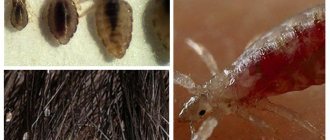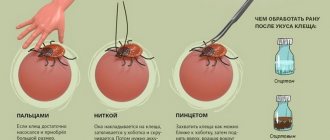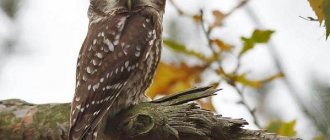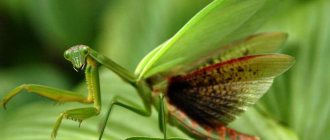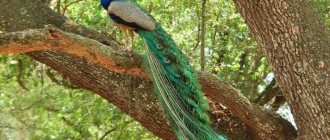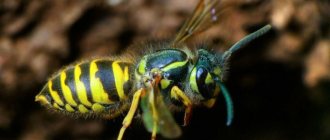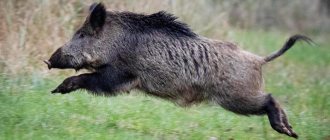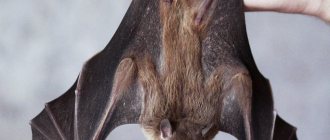- October 14, 2018
- Hunting
- Elena Motrenko
Wild boar (boar) is a large wild animal, a desired trophy for many hunters. When engaging in such fishing, you need to be extremely careful, since the animal is very strong and quite cunning. Killing a boar is not an easy task. Those hunters who succeeded consider the victory over him one of their most significant achievements.
The boar is very smart. His tactic is to lure a person into hiding, and then surprise him from hiding.
Where does the wild boar live?
These animals first appeared in the countries of Asia and North Africa. Later they settled the islands of Sumatra, Java and many others. Today, wild boars are distributed from the Atlantic to the Pacific Ocean, including northern Africa, Eastern and Southern Europe, as well as Central Asia north of the Himalayas.
Previously, the range was much wider. In addition to the British Isles, it included the south of Scandinavia, where today the wild boar has been exterminated. In our country, it is distributed in the forests of Siberia, in the Krasnoyarsk Territory, and in several districts of the Irkutsk region. Small populations have been recorded in the Moscow region. The animal's habitat is mountainous and tropical forests with high humidity. In Russia, these powerful animals have chosen swampy areas and oak forests.
Description
Wild boar in its natural habitat
Before the Ice Age, there were several families of artiodactyls with certain characteristics. But only one has survived to this day, to which scientists gave the name “real pigs.”
Now this family is divided into five genera:
- the babirusa lives on the island of Celebes;
- Warthogs are common in Africa;
- the long-haired pig has adapted to the tropical climate;
- Wild boars live in Europe, Asia and Africa.
The latter genus lives in many places on Earth and is divided into three main species:
- the common wild boar, found in most countries;
- in the Himalaya mountain range there is a pygmy pig;
- The bearded pig is common on the Celebes Islands, the Philippines, Java and Sumatra.
It is these three species that now represent wild boars on Earth, and they are also divided into different subspecies, depending on their habitat. Their appearance may differ, but their habits and lifestyle are largely the same.
Head
The elongated front part of the skull with a powerful upper jaw allows the animal to dig in the ground to get food. The bow ends with a powerful snout, which carries out the main work of loosening the soil. It has a very rigid border, which helps to find food.
The boar has 44 teeth: 12 incisors, 28 molars and 4 canines. With strong teeth the animal grabs prey, holds it and chews it. They easily eat nuts, rhizomes, bones - everything that wild boars eat. Boar tusks deserve special attention. In mature individuals, they reach a length of 25 cm. With their help, the animal finds food by digging up soil to extract plant roots. In addition, they are used in defense against wolves and bears.
Interestingly, fangs begin to develop in piglets in the womb and in newborn piglets they are ready to perform their function.
Appearance and features
Body structure of a wild boar
A wild boar is visually similar to a pig, but due to harsher living conditions it has characteristic differences. Adults have a massive body covered with hair. Beneath it are hidden strong and durable muscles that can withstand high loads.
The body is round in shape, supported on short legs. At the back there is a small tail covered with sparse hair. Due to the narrow pelvis and wide sternum, the boar looks like a barrel.
The head is connected to the body by a wide neck.
The head is elongated, with high-set eyes. The nose is located above the mouth in the form of a dark spot. At the level of the forehead, at the edges, there are ears sticking up. Long fangs grow at the edges of the mouth, which are the main distinguishing feature of wild boars from other pigs. They help tear up soil and foliage to search for food, and are also used for defense and attack. Interesting fact : adult boars' tusks can grow up to 25 cm in length.
Their average length is 15-17 cm. The hair of wild boars is hard and unpleasant to the touch. The color depends on the place of residence of the individual. Color varies from gray to dark brown. Those species that live in cool areas acquire thicker fur with the onset of winter, which allows them to survive in the snow.
The animal grows up to a meter in height and up to two meters in length. Due to their massive body, wild boars have a large mass, which in adult individuals averages 150-200 kg, but especially developed ones can weigh up to 300 kg. Males grow much larger than females.
For Russia, wild boars are not uncommon. The country is home to five subspecies with unique appearance features:
- Central European wild boars are small in size and have dark skin;
- The Ussuri has large dimensions, but the main distinguishing features are small ears and white fluff under the nose, reminiscent of a mustache;
- the Caucasian has light fur and a large head;
- Transbaikal - a small animal with a brown color;
- The Central Asian has light hair on the body and dark hair on the legs.
Despite the visual differences between the species, it is always easy to see that they belong to the wild boar family.
Lifestyle
This animal does not see very well, but it has a well-developed sense of smell. He can smell a person at a distance of four hundred meters. Strong smells often scare away the animal and disrupt the hunt.
Basically, wild boars live in herds. They include females with offspring from the previous year. The adult boar leaves him and lives alone. He comes to the herd for the mating period, and at this time takes on the role of leader. Wild boars are active at night, when they go out to get food and take water treatments.
During the day, he usually rests in swamps or in reeds, hiding in bushes. The habits of the wild boar are quite interesting. Animals are sensitive to sudden temperature changes. To avoid sunburn and protect themselves from insect bites, they carefully smear their entire body with mud. This is probably why an important condition for their comfortable living is the presence of a body of water near the rookery.
Boars try to keep a respectful distance from people. They rarely approach populated areas, but they regularly make forays into fields where corn or oats grow. The habits of wild boars do not change in winter. He moves little because it is difficult for him to move in deep snow.
Commercial value
Wild boar is of particular commercial interest because it has valuable meat, skin and bristles. The weight of wild animals in winter is 10 percent more than in summer. By killing a wild boar, a hunter can provide himself with an average of 50 kilograms of meat. In addition, up to 300 decimeters of square leather are obtained.
Important point! Hunting for wild boar comes down to watching for animals in watering places and places of food, as well as on their trails. In addition, these animals are hunted with the help of dogs.
A wild boar is an agile and fast animal, so when it is on the move, either alone or in a group, it is not easy to hit with a gun. A wounded animal is very dangerous, so a meeting with such a boar can be fatal for a hunter.
Wild boar: nutrition (feed, food)
All food of this animal can be divided into four groups:
- fruits, nuts, seeds and berries;
- underground parts of plants;
- vegetative parts of plants (aerial);
- animal food (insects and their larvae, earthworms, fish and shellfish, rodents and birds, carrion and frogs).
It should be noted that everything that wild boars eat in nature can be divided into seasonal groups and species composition. The animal finds most of its food (underground parts of plants, animal food) not on the surface, but in the soil. The wild boar eats three and a half times more underground food than above-ground food.
The wild boar eats what it finds along the way. He is endowed with a good memory, and therefore can return to the places where he ate the most satisfying meal. This animal is omnivorous. Answering the question of what wild boars eat in nature, we can state that everything that the animal finds and that nature gives it at a certain period is consumed as food.
The diet of wild boars depends on a number of factors:
- habitat;
- the growth of certain plants;
- the range of insects and animals that may become prey;
- feed availability;
- time of year.
Unforeseen collision
If all precautions have been taken, but a dangerous surprise still occurs, you need to follow some rules to avoid consequences. What to do if you meet a wild boar in the forest?
Take into account a few of the most important techniques. You shouldn't run, you need to stay calm. The boar will smell the person and leave, not seeing the danger.
But if the boar is scared, angry, or you met him during the rutting period, or disturbed a female with piglets, then things are bad. When the animal attacks, nothing can scare it.
If a boar is angry, it knows no fear. And since the animal runs fast (30 km/h), it will catch up with a person in no time. Therefore, there is no point in fleeing from him. But he is not able to slow down or turn to the side. Therefore, the correct way out of this dangerous situation is to jump to the side. But this requires good skill. Few people have managed such a trick. If you manage to do this, you can consider yourself saved - the boar rarely comes back. If he nevertheless rushes a second time, you must again jump to the side and dodge until you reach the shelter.
There is no point in defending yourself, it will not bring results. A knife blow or shot must be very well aimed and aimed at the eye, neck or ear.
There is a safer option - climb a tree and sit there for a while. At first the boar will watch you below, but after a while he will leave.
Nutrition in spring
A wild boar, emaciated and emaciated over a long winter, is ready to eat everything, even the bark of young trees. But the sun is heating up more and more intensely, the snow is melting, and living inhabitants are appearing in the forest. What does a wild boar eat during this period? If you manage to catch small vertebrates, the boar will be well fed for several days. Sometimes you have to dig through thawed ground to find the rhizomes of dandelion, knotweed, and gravilate. In addition, last year's nuts and acorns can be found on the surface. Insects wake up and also diversify the diet.
With the appearance of greenery, the wild boar eats stinging nettle, sow thistle, and gravy with appetite. The animal finds in secluded places larvae that were laid by insects last year. At the end of spring, birds begin to build nests. If they are within reach, then both the eggs and the birds themselves become prey for wild boars.
Reproduction
The wild boar is considered a limited polygamous animal: there are 1-3 females per male.
Mating season
Females usually enter into mating games in the second year of life, and males only in the 4th-5th year. Estrus occurs from November to January, during which time males engage in fierce fights with each other, using their powerful fangs.
Pregnancy
The duration of pregnancy is 18 weeks. In one litter, a female has an average of 4-6, sometimes up to 12, cubs.
Offspring
The weight of a newborn piglet is from 600 to 1650 g. It is striped, with white, black-brown and yellow stripes that camouflage the baby in the forest floor. After 4-5 months the color changes to dark.
The female closely guards the cubs, aggressively guarding them from enemies, and returns to them every 3-4 hours. In the first weeks of life, piglets sit in a kind of “nest”. Gradually they begin to go outside with the female, and at 3 weeks they begin to master the habits of adult boars.
Milk feeding lasts up to 3.5 months. In autumn, young animals reach a weight of 20-30 kg.
Puberty
Sexual maturity in wild boars occurs at approximately 1.5 years, full maturity at 5-6 years.
Summer diet
This is the most satisfying time for these powerful animals. It is not difficult to guess what wild boars eat during this period. Tender shoots of plants, fruits and berries, leaves and seeds - everything that has managed to ripen by this moment, and everything that is still collecting juices and coming to the surface of the earth, everything falls into the mouth of a wild boar. Wild boars also eat small vertebrates: hedgehogs and mice, frogs, as well as invertebrates - insect larvae, earthworms. If the hare fails to escape from the wild boar in time, then he too can become dinner for the animal.
Origin of the species
Scientists suggest that wild boars appeared before the Ice Age. This is evidenced by the studied remains of ancient individuals. Since then, the beast has remained virtually unchanged in appearance. It adapts well to changing weather conditions. This fact and its unpretentiousness to food helped it not only live for millions of years, but also not be on the verge of extinction, unlike many other ancient animals.
Interesting fact : the wild boar is the direct ancestor of the pig. The latter descended from them at a certain stage of evolution.
The wild boar belongs to the artiodactyl animals, a suborder of pig-like animals. Zoologists classify it as a separate genus of wild boars.
Abundance of food in autumn
Acorns and nuts are a favorite delicacy of wild boars. These fruits contain a large amount of fat and protein, which allows the animal to quickly get enough. Wild boars feel especially comfortable in autumn in oak forests. By autumn, numerous rodents with offspring appear. They become easy prey for wild boars.
Often, in search of food, these animals pay visits to the gardens of summer residents and villagers. At this time, they become a real disaster, destroying vegetable gardens. Root vegetables and cabbage, as well as their tops and worms, which are found in abundance in the garden soil, are destroyed by the wild boar family without a trace.
Social structure
A herd of wild boars
. Adult males live separately. Each of them has its own territory, where they feed and lead a measured lifestyle. Females prefer to unite in flocks consisting of several individuals. When the rutting season begins, males join them. After the birth of the offspring, the small boars remain with their mothers and form a large herd.
Individuals care about each other and are ready to defend themselves, entering into battle with any offenders. At the same time, young boars learn survival from more experienced ones and quickly get used to it.
Winter nutrition
In winter, the animal is helped by a good sense of smell. Sometimes a mouse slips through the snow, sometimes a bird freezes, and it goes to lunch. Having an excellent memory, wild boars return to oak and walnut trees, tear up the snow and look for fallen fruits. Horsetail, which wild boars do not eat in summer, becomes an excellent help in winter. Frosts convert simple carbohydrates into sugars and horsetail becomes sweet.
These animals do not disdain the leftovers from someone else’s feast. Animal bones, carrion - everything is used to satisfy hunger. Only the strongest and most resilient animals survive the winter. In spring, the population decreases noticeably.
Population and species status
Now the wild boar population is not in danger.
In most habitats, wild boars feel great and are continuously increasing their population. States do not prohibit hunting them, because even despite active human activity aimed at reducing the population, the total number of these animals is still increasing. Moreover, in some places there is overpopulation, due to which wild boars experience a shortage of food.
When there are too many individuals in the territory, they quickly eat up the available food supplies and begin searching for it in the thickness of the earth. They dig the soil with their horns for a long time, which ultimately leads to damage to the root system of trees. Because of this, forests are beginning to thin out. And after making sure that there is no food, the flock can go to farmers' fields and destroy all the crops.
If there is no overpopulation of wild boars in the area, they are of great benefit. They actively destroy harmful insects and plants. And the constant loosening of dry soil leads to its renewal and increased fertility.
Enemies in nature
In turn, wild boars can become a delicacy for larger predators. In our latitudes, the main natural enemy of wild boars is
wolf. Packs of wolves are very willing to hunt these animals, although it is worth paying tribute to wild boars, often adult individuals do not just give up without a fight. Possessing impressive and sharp fangs, the wild boar is quite capable of fighting back, and indeed there are cases when wolves themselves died from the fangs of wild boars.
In hotter countries, wild boars also fall prey to even more dangerous predators:
tigers, leopards, and in Africa the most dangerous enemy of the wild boar is the lion.
And of course, many wild boars have died and are being killed by human hunters and poachers.
Gon
The rutting period for wild boars lasts from December to January. An adult male finds a herd of females by smell, sound and tracks. When the wild boars are in season, they return to the herd. After fertilization they leave it again. As a rule, wild boars have several females during the rut.
At this time, the behavior of males becomes aggressive. If a rival comes into the herd, a fight to the death is inevitable. They hit each other with their fangs, causing terrible lacerations. The loser leaves the herd.
The female's pregnancy lasts 120-130 days. Before giving birth, she leaves the herd and looks for a secluded place. Then he builds himself a bed, like a “nest” from branches and dry grass.
A female boar gives birth to 5 to 15 piglets, weighing about 1 kg. Their fur is black or brown with white longitudinal stripes. This color protects babies from attacks by predators. It is better not to approach the female’s den during this period, as she is very aggressive.
Interesting Facts
- The ancestors of the modern domestic pig are wild boars of Mesopotamia, Asia Minor, Europe and China, which people domesticated back in the Neolithic era. According to archaeologists, wild pigs were domesticated in the Middle East 13,000 to 12,700 years ago. At first they were kept in a semi-wild state in the wild, as is the case now, for example, in New Guinea. The remains of pigs were discovered by scientists in Cyprus, where they could only have arrived from the mainland along with people. The first domestic pigs were brought to Europe from the East, after which an active process of domestication of European wild pigs began. It happened quite quickly thanks to the high adaptability and omnivorous nature of wild pigs. These animals were bred for their tasty meat, and their skins (for making shields), bones (for creating tools and weapons) and bristles (for brushes) were also used. In India and China, wild boars ate human waste and were even called “pig toilets.”
Video
And in conclusion, an interesting documentary about wild boars - “The Boar is a Born Fighter.”
Author: Pavel Chaika, editor-in-chief of Poznavaika magazine
When writing the article, I tried to make it as interesting, useful and high-quality as possible. I would be grateful for any feedback and constructive criticism in the form of comments on the article. You can also write your wish/question/suggestion to my email [email protected] or Facebook, with respect, the author.
Author page
